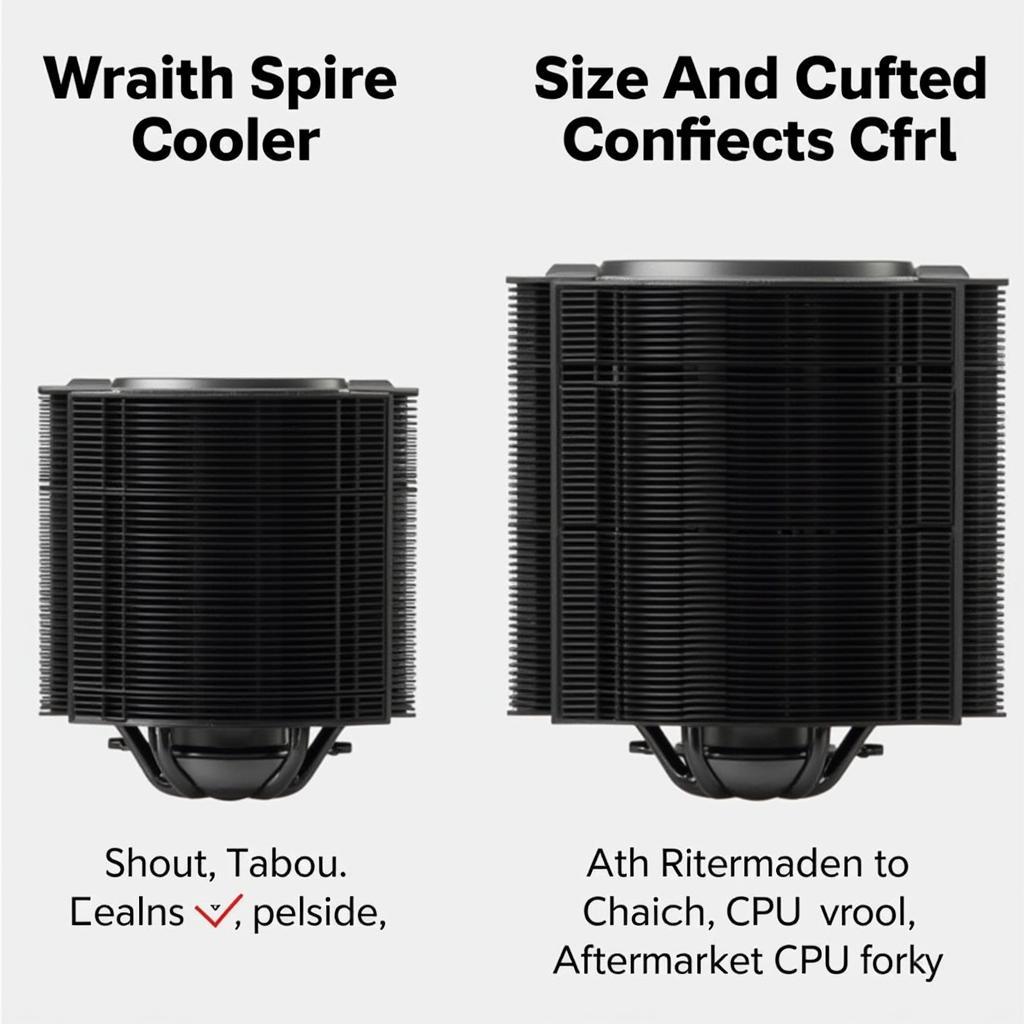The AMD Ryzen Wraith Spire cooler is a popular choice for budget-minded PC builders. It’s a capable cooler that comes bundled with many Ryzen CPUs, offering a balance of performance and low noise levels. However, like any stock cooler, it has its limitations. This guide will delve into the intricacies of the Ryzen Wraith Spire cooler, exploring its pros and cons, compatibility, and whether upgrading to an aftermarket solution would be a worthy investment.
Understanding the Ryzen Wraith Spire Cooler
The Wraith Spire cooler features a conventional design with an aluminum heatsink and a copper core. The copper core sits directly on top of the CPU, drawing heat away and transferring it to the aluminum fins. A pre-applied thermal paste ensures optimal heat transfer between the CPU and the cooler. A 92mm fan, attached to the heatsink, draws cool air from the surrounding area and blows it over the fins, dissipating the heat away from the CPU.
The Wraith Spire utilizes AMD’s standard mounting mechanism, making installation relatively straightforward. The cooler is compatible with a wide range of AMD sockets, including AM4 and AM5.
Performance and Limitations
The Wraith Spire cooler is designed to handle the thermal demands of Ryzen CPUs at their base clock speeds. It performs admirably under normal operating conditions, keeping temperatures in check during general tasks like web browsing, light productivity, and multimedia consumption.
However, the cooler’s limitations become apparent when pushing the CPU to its limits. Under heavy workloads such as gaming, video editing, or running demanding applications, the Wraith Spire may struggle to keep temperatures within optimal ranges. This can lead to thermal throttling, where the CPU reduces its performance to prevent overheating.
When to Consider an Aftermarket Cooler
 Wraith Spire vs. Aftermarket Cooler
Wraith Spire vs. Aftermarket Cooler
While the Wraith Spire is a competent cooler for stock performance, upgrading to an aftermarket cooler can provide several benefits:
- Lower Temperatures: Aftermarket coolers, with their larger heatsinks, more efficient heat pipes, and powerful fans, can significantly reduce CPU temperatures, even under heavy workloads.
- Increased Overclocking Potential: Lower temperatures translate to more headroom for overclocking, allowing you to push your CPU further and extract more performance.
- Reduced Noise Levels: Many aftermarket coolers utilize larger, slower-spinning fans, which are quieter than the smaller, high-RPM fans often found on stock coolers.
Expert Insight:
“For users planning to heavily overclock their CPUs or run demanding applications that push the processor to its limits, investing in an aftermarket cooler is highly recommended,” says Mark Stevenson, a veteran PC builder and tech reviewer. “The performance gains and thermal headroom provided by an aftermarket solution can significantly improve the overall computing experience.”
Choosing the Right Aftermarket Cooler
The market is saturated with CPU coolers, each catering to different budgets and performance requirements. When selecting an aftermarket cooler, consider the following factors:
- Compatibility: Ensure the cooler supports your CPU socket type.
- Cooling Capacity: Look for coolers with a higher TDP (Thermal Design Power) rating, which indicates their ability to dissipate heat.
- Size and Clearance: Measure your PC case’s clearance to ensure the cooler fits comfortably without interfering with other components.
- Noise Levels: Check the cooler’s fan specifications for noise levels measured in decibels (dBA).
Conclusion
The Ryzen Wraith Spire cooler is a capable stock cooler that provides adequate cooling for everyday tasks. However, for users seeking to maximize their CPU’s performance, overclock, or simply desire a quieter computing experience, upgrading to an aftermarket cooler is a worthwhile investment. By carefully considering the factors mentioned above, you can choose a cooler that meets your specific needs and budget, ensuring your CPU stays cool and performs at its best.


